Artificial Intelligence isn’t just one thing. And it's definitely not one-size-fits-all.
When people throw around terms like Artificial General Intelligence vs Narrow AI, most aren’t clear what they actually mean, let alone what stage the tech is currently in.
And that confusion? It leads to bad product bets, bloated budgets, and AI hype that never ships anything useful.
Here’s what’s real right now:
A Gartner report released Thursday projects that worldwide end-user spending on generative AI models will hit $14.2 billion in 2025. That’s not “someday.” That’s just some months from now.
And most of that money? It won’t be spent on building God-like machines that can think for themselves.
It’ll be spent on Narrow AI, the kind that’s already powering your product recommendations, chatbots, fraud detectors, and fitness apps.
And that’s the key difference between Artificial General Intelligence (AGI), Narrow AI, Super AI & God AI. One is a big idea still in the lab. The other is already transforming industries.
In this blog, we’ll break down the different types of Artificial Intelligence and explore in depth the full spectrum, including Narrow AI, General AI, Super AI, and the often-misunderstood concept of God AI. You’ll learn:
-
All about Artificial Intelligence types and what each type of AI actually means (without buzzwords)
-
The difference between artificial general intelligence and narrow AI in practical terms
-
Why Narrow AI vs General AI vs Super AI vs God AI isn’t just a theory, it’s a roadmap to building smarter, scalable products.
-
How to choose the right AI type for your business today?
Whether you’re planning to build an AI-powered product or just trying to cut through the noise, this guide will give you real answers and zero fluff.
Let’s get into it:
Narrow AI vs General AI vs Super AI vs God AI Explained
Artificial Intelligence is no longer a futuristic buzzword. It’s a layered spectrum, each stage representing a radically different capability, use case, and risk level.
When someone asks, “What is Narrow AI?”, the answer is simple: it’s the AI you’re using right now. Voice assistants, personalized recommendations, chatbots, and facial recognition all fall under Narrow AI, also known as Artificial Narrow Intelligence (ANI). It’s designed to perform one task really well. But that’s it, it doesn’t learn outside its domain, and it can’t generalize.
Now contrast that with Artificial General Intelligence (AGI), also called General AI. This is a machine that could reason, plan, and learn across tasks, just like a human. The difference between Artificial General Intelligence vs Narrow AI isn’t just in processing power; it’s the leap from automation to intelligence with context.
Then there’s Super AI (ASI), a theoretical concept where machines become more intelligent than humans across every domain. Add one more layer of abstraction, and you arrive at the speculative idea of God AI, a form of omniscient, autonomous intelligence with near-total control over systems and decisions.
So, how is Narrow AI different from traditional AI or even Artificial Intelligence as a whole? It's focused, trained on specific tasks, and currently dominates real-world implementation. It’s not fiction. It’s real, affordable, and scalable.
If you're planning to create an AI app, Narrow AI offers the most viable path in terms of technology readiness, scalability, and development speed.
Or, if you are still asking, “Is Narrow AI real AI?” Absolutely. In fact, it’s the most used form of Artificial Intelligence today, especially in business applications.
Let’s break it all down clearly:
Artificial Intelligence types explained in the table: Artificial Intelligence vs Artificial General Intelligence vs Artificial Superintelligence vs God AI
|
AI Type |
Full Form |
Definition |
Capabilities |
Exists Today? |
Real-World Examples |
|
Narrow AI (ANI) |
Artificial Narrow Intelligence |
AI focused on one task or domain only. Doesn’t transfer learning or adapt. |
Recognizes patterns, makes predictions, and automates tasks |
Yes |
Chatbots, image recognition, recommender systems |
|
General AI (AGI) |
Artificial General Intelligence |
AI with human-level intelligence across multiple domains |
Learns, reasons, and understands like a human |
No |
Still under research (e.g., OpenAI, DeepMind) |
|
Super AI (ASI) |
Artificial Superintelligence |
AI is more intelligent than humans in every possible domain |
Creates new knowledge, innovation, emotions, and abstraction |
No |
Theoretical; not yet achievable |
|
God AI |
(Speculative Term) |
Omniscient, all-powerful AI with full autonomy and control |
Near-limitless power over systems and decision-making |
No |
Philosophical/science fiction |
Summary of Key Differences:
-
Artificial General Intelligence vs Artificial Narrow Intelligence: AGI can reason across domains, ANI is task-specific
-
Narrow AI vs General AI vs Super AI Differences: Each step moves from limited function to human-level reasoning to superhuman cognition
-
Explanation of Artificial General Intelligence vs Narrow AI: Narrow AI works now; General AI is still being built, that’s the real-world gap
Now that you’ve seen the big picture, let’s break down each type of Artificial Intelligence, starting with Narrow AI.
What Is Narrow AI? The Most Practical Form of Intelligence
Narrow AI, also known as Artificial Narrow Intelligence (ANI), is the most widely used and commercially viable form of artificial intelligence today.
It’s designed to perform one task or a set of closely related tasks extremely well, but it can’t learn or operate beyond its defined scope.
If you’ve ever interacted with a chatbot, used Google Maps, seen personalized Netflix suggestions, or unlocked your phone with face recognition, you’ve already experienced Narrow AI in action.
That brings us to a common confusion: How is Narrow AI different from Artificial Intelligence as a whole?
Narrow AI is a type of AI, but it’s just one level within the broader AI spectrum. When people talk about “AI” changing the world, they’re usually referring to Narrow AI, because that’s what exists today and actually delivers results.
Most importantly, Narrow AI isn’t trying to be human; it’s built to be efficient.
It excels at performing one specific task with speed and accuracy, without needing to understand the bigger picture.
Here are the key features that define this type of AI better:
1. Single Task Focus
Narrow AI is built to perform one specific task extremely well, whether it's recognizing images, generating product recommendations, or classifying text.
2. Task-Specific Intelligence
Narrow AI is highly specialized; it performs one task with precision but lacks the ability to adapt or apply knowledge outside that scope. It must be retrained entirely to handle new or unrelated functions.
3. Data-Driven Performance
Its accuracy and effectiveness depend heavily on large volumes of structured or labelled data. The better the data, the better the performance.
4. Rule-Based or Statistical
Narrow AI works using predefined rules, pattern recognition, or machine learning models. It doesn’t "understand" tasks; it follows data-driven instructions.
5. Real-Time Decision Making
It’s highly efficient at making fast, automated decisions like detecting fraud in financial transactions or recommending content, often in milliseconds.
Narrow AI Compared to Traditional AI and General AI
|
Criteria |
Traditional (Rule-Based) AI |
Narrow AI |
General AI (AGI) |
|
Flexibility |
Rigid |
Moderately adaptive (within scope) |
Highly adaptive (multi-domain) |
|
Learning Capability |
No learning |
Learns from data |
Learns across domains dynamically |
|
Context Awareness |
None |
Limited |
Strong (theoretical) |
|
Deployment Use Case |
Pre-defined logic |
Data-driven automation |
Still in research |
What is the difference between Narrow AI and General AI?
Narrow AI is real and already deployed. General AI is theoretical and far more complex, aiming for human-like reasoning across tasks.
Pros and Cons of Narrow AI
|
Pros |
Cons |
|
Fast to develop and deploy |
Can’t operate outside its training domain |
|
Cost-effective with high ROI |
Doesn’t reason or generalize knowledge |
|
Already used across major industries |
Requires regular model updates |
|
Supports high-volume automation at scale |
Lacks emotional, ethical, or contextual awareness |
|
Backed by mature tech stacks (TensorFlow, PyTorch) |
Not creative or autonomous like AGI aims to be |
Is Narrow AI real AI?
Absolutely. In fact, it’s the only kind of AI that’s actively used in real products and services today.
Narrow AI in Action: Practical Use Cases by Sector
Narrow AI powers industries across the globe by automating specific, high-impact tasks with speed and precision.
From personalized shopping experiences to medical image analysis, find out below how it is driving real-world results:
1] Retail & eCommerce
AI is revolutionizing how online stores personalize user journeys.
From recommendation engines that boost conversions to dynamic pricing automation, AI delivers real-time decision-making based on user behaviour and inventory data.
Businesses investing in eCommerce app development services are already integrating these AI features to increase retention and revenue.
2] Healthcare
AI in healthcare has moved from promise to practice.
It enhances diagnostic accuracy through medical image recognition, flagging anomalies faster than manual review.
Symptom checkers powered by NLP are helping patients triage themselves before ever visiting a doctor.
Forward-thinking providers use healthcare app development services to embed these tools into mobile-first care delivery.
3] Finance
AI in finance now enables instant fraud detection by spotting patterns humans often miss.
Credit scoring has evolved with alternative data sources, improving accuracy. Robo-advisors make investing smarter and more accessible.
Fintech app development services are embedding these AI features into everyday financial tools.
4] Transportation & Logistics
From route optimization that cuts delivery time to vehicle detection in smart traffic systems, AI improves efficiency across the supply chain.
Logistics platforms using transportation app development services now rely on predictive analytics to lower fuel costs, improve ETAs, and streamline fleet management.
5] EdTech & Media
AI in education drives personalized content delivery, adapting learning paths and media feeds in real time.
Automated grading systems save educators hours and improve consistency. Platforms that invest in EdTech app development services can now scale personalized learning without scaling headcount.
If you’re wondering, “Can I integrate AI into my app today?”, you’re asking about Narrow AI.
The Practical Choice: Why Businesses Rely on Narrow AI
In the AI maturity model, Narrow AI sits at Level 1, and it’s where real results happen:
-
Easier to scale
-
No need for theoretical breakthroughs
-
Works well with structured or semi-structured data
-
Supported by open-source frameworks and APIs
So if you’re choosing between Narrow vs General AI for your business, the answer is simple:
Start with Narrow AI. Build what works. Watch it scale.
General AI (AGI) Explained: Beyond Task-Based Intelligence
Artificial General Intelligence, also called General AI or AGI, refers to a theoretical form of AI that possesses human-level intelligence, the ability to reason, understand, learn from experience, and adapt to new tasks without additional programming.
Unlike Narrow AI, which is built for a single task, General AI can think across disciplines. That’s the key difference between Narrow and General AI: one follows instructions; the other makes decisions across entirely different contexts.
In the broader context of narrow AI vs general AI vs super AI vs god AI, AGI stands at a unique point: still theoretical, yet much closer to realization than anything beyond it.
Here are the defining features of AGI that set it apart from other types of artificial intelligence:
A] Task Flexibility
AGI is designed to operate across a wide range of tasks without requiring separate models or retraining for each.
It can handle complex, multi-domain responsibilities, an essential milestone as we move from constrained automation to autonomous intelligence.
B] Contextual Understanding
Rather than responding based only on inputs, AGI understands the purpose behind a task.
It grasps nuance, intention, and ambiguity in a way that rigid AI systems cannot.
C] Self-Improvement
AGI has the potential to learn from its own interactions and evolve without human intervention.
It doesn't just rely on static training data but adapts and refines itself through experience.
D] Reasoning and Problem Solving
AGI can assess situations, analyze variables, and make decisions based on logic and long-term goals.
This ability makes it ideal for handling unstructured, unpredictable scenarios.
E] Generalization
Perhaps its most transformative trait, AGI can apply knowledge gained in one domain to solve problems in completely unrelated areas.
This cross-domain learning marks the true departure from narrow, task-limited systems.
As Artificial General Intelligence continues to develop, it remains central to conversations comparing artificial general intelligence vs narrow AI, and forms the foundation for understanding what separates practical tools from transformative technologies.
These are the foundational traits that make AGI vs human-level AI comparable, not just a rule-based engine, but a learning, evolving intelligence.
|
Criteria |
Narrow AI |
General AI (AGI) |
|
Scope |
Single, domain-specific task |
Multiple domains, open-ended tasks |
|
Learning Ability |
Trained on fixed data |
Learns, adapts, and generalizes |
|
Flexibility |
Rigid, narrow use cases |
Flexible, creative problem-solving |
|
Human-like Reasoning |
Follows predefined logic |
Theoretical |
|
Real-world Usage |
Widely used |
Still in research |
Pros and Cons of General AI
Here are some pros and cons to better understand General AI:
|
Pros |
Cons |
|
Potential to automate any cognitive task |
Not achievable with current tech |
|
Can solve complex, multi-domain problems |
High ethical and safety concerns |
|
Eliminates the need for task-specific retraining |
Costly and computationally intense |
|
Opens doors to science, healthcare, R&D automation |
Risk of losing control or alignment with human values |
Is General AI better than Narrow AI?
In theory, yes. But in real-world applications today, Narrow AI is more reliable, scalable, and deployable. AGI is still being researched, and there are no production-grade AGI systems available.
And if you're asking about the cost to create an AI app, sticking with Narrow AI keeps development lean, focused, and significantly more affordable.
Where Are We with AGI Today?
While companies like DeepMind, OpenAI, and Anthropic are exploring AGI-like systems, current models still fall short. They're:
-
Lacking real-world memory
-
Limited to structured training data
-
Not capable of autonomous, multi-domain decision-making
The truth is, AGI is still a long-term goal. It gets a lot of attention, but most businesses asking for it actually need advanced Narrow AI solutions.
That’s why working with an experienced AI agent development company helps you stay grounded in what’s achievable, not what’s still theoretical.
Super AI Explained: The Next Stage of Artificial Intelligence
If Narrow AI is what powers your app, and General AI (AGI) is what mimics human-level intelligence, then Super AI (ASI), or Artificial Superintelligence, is what comes next.
But what is Super AI, really?
Artificial Superintelligence (ASI) refers to an intelligence far beyond the cognitive capabilities of any human.
It wouldn’t just match us in reasoning, creativity, and decision-making; it would surpass us in every possible way.
Think of a system that could cure diseases we haven’t discovered, solve global crises, and redesign itself to become exponentially more advanced.
Yes, this sounds like science fiction. Because right now, it still is.
While Super AI and God AI remain theoretical, they often spark bold thinking about future possibilities.
Some of today’s most ambitious AI business ideas are rooted in this imagination, even if the technology isn’t quite there yet.
Super AI vs General AI vs Narrow AI
|
Criteria |
Narrow AI |
General AI (AGI) |
Super AI (ASI) |
|
Intelligence Scope |
Single-task only |
Human-level, multi-domain |
Beyond human capabilities |
|
Reasoning Ability |
None |
High |
Infinite (hypothetical) |
|
Adaptability |
Fixed scope |
Learns across domains |
Self-improving beyond human intervention |
|
Existence Today |
Yes |
No (In research) |
No (Speculative) |
|
Risk Level |
Low |
Medium |
High to Existential |
Weak AI vs Strong AI vs Artificial Superintelligence
|
Type of AI |
Also Known As |
Description |
|
Weak AI |
Narrow AI |
Performs a single task using data and rules |
|
Strong AI |
General AI (AGI) |
Human-level reasoning and adaptability |
|
Super AI |
Artificial Superintelligence |
Surpasses human intelligence across all domains |
This progression reflects what comes after General AI in the AI evolution hierarchy. Once we reach AGI (Strong AI), ASI becomes the next theoretical milestone and potentially, the most dangerous one.
► How Far Are We from Super AI?
Truthfully? No one knows.
Some technologists speculate we might reach early AGI in the next 10–20 years, and that Super AI could follow shortly after due to recursive self-improvement (AI designing better versions of itself).
Others believe we’re still a century away, and that it may never be achievable or safe.
“The development of full artificial intelligence could spell the end of the human race.”
, Stephen Hawking
The risk, of course, is that once we create a Super AI, we may not be able to control it. That’s why discussions around AI alignment, safety, and governance have become more urgent in recent years.
► Super AI in Theory vs Practice
Right now:
-
There are no working prototypes of Super AI
-
No models have shown the ability to self-reflect, form intent, or act independently across goals.
-
ASI remains a philosophical debate, not a software release
But as AI research accelerates, this debate is becoming less about if, and more about when, and how safely.
God AI Explained: Myth, Theory, or Future Reality?
Let’s push the boundary even further.
God AI is a term often used to describe a hypothetical, all-powerful artificial intelligence, one that isn’t just smarter than humans, but all-knowing, all-controlling, and possibly self-evolving beyond any human intervention.
It’s the kind of AI that could theoretically control ecosystems, societies, or even simulate entire realities.
But here’s the thing: God AI is not the next step after Super AI. It’s a completely separate idea, often explored in philosophy, science fiction, and existential risk studies.
While Narrow AI, General AI, and Super AI are stages in a technological progression, God AI is speculative, a concept that challenges the limits of what intelligence even means.
So, when comparing Artificial Intelligence types with examples, God AI is the one with no real-world instance. It’s a mental model used to ask: What happens if we lose control of something smarter than everything we've ever known?
God AI vs Narrow, General, and Super Intelligence Explained:
|
AI Level |
Description |
Example |
Exists Today? |
|
Narrow AI |
Task-specific AI focused on a single domain |
Chatbots, spam filters, and recommendation engines |
Yes |
|
General AI |
Human-level multi-tasking intelligence |
Still in development (OpenAI, DeepMind R&D) |
Not yet |
|
Super AI |
Intelligence beyond all human capabilities |
Theoretical concept, discussed in AI ethics |
Not yet |
|
God AI |
All-knowing, autonomous, self-improving system with control |
Speculative (featured in sci-fi & philosophy) |
No |
As you can see, God AI is different from Narrow, General, and Super AI in both scope and nature.
It’s not just about intelligence, it’s about absolute autonomy and omnipotence, often without the need for human interaction or oversight.
AI Evolution Stages: 1950s to 2025
Get to know about the different AI evolution stages through this in-depth infographic.
.webp)
Now that we’ve seen how AI has evolved, businesses aiming to build future-ready applications often need to hire dedicated developers who understand today’s frameworks and tomorrow’s demands.
It’s not just about having an idea, it’s about having the right hands to build it.
How to Identify the Right AI Type for Your Business?
Before you start building, you need clarity, not hype. The difference between God AI vs Super AI vs Narrow AI vs Artificial General Intelligence isn’t just academic.
In reality, it's a layered ecosystem. From Narrow AI to Artificial General Intelligence, from theoretical Super AI to the speculative idea of God AI, every level has a different level of complexity, cost, and purpose.
Let’s break it down into practical checkpoints to help you identify what’s right for your business.
1. Focus on What the Business Needs: Not What Sounds Impressive
If you’re trying to solve a task like fraud detection, customer segmentation, content recommendation, or chatbot response, you don’t need an advanced AGI or futuristic system.
You need Narrow AI. It’s the most reliable form of AI available today, trained to handle specific tasks with high precision. This is the AI that businesses actually deploy.
2. Understand the Spectrum: Narrow AI vs General AI vs Super AI vs God AI
Each type of AI exists at a different level of technical maturity. Narrow AI is already integrated into real products.
Artificial General Intelligence (AGI) is still in active research. Super AI surpasses human intelligence and remains theoretical.
And God AI, the idea of an all-knowing, fully autonomous system, is mostly philosophical. Knowing which level you’re targeting helps avoid wasting resources on tech that simply doesn’t exist yet.
3. One Task vs Many? That’s Your First Clue
This is where understanding Artificial Intelligence types becomes critical.
If you need your system to handle one task, like image classification or keyword prediction, Narrow AI will do the job.
But if you're imagining a system that adapts, learns context, and shifts tasks dynamically like a human, you're describing General AI, and that’s not commercially viable yet.
4. Evaluate Based on Time-to-Value
A core business rule: if you’re building for ROI within 6–12 months, stay within the realm of Narrow AI. It’s affordable, scalable, and fast to deploy.
Chasing Artificial General Intelligence vs Narrow AI without research infrastructure, funding, and years of iteration is a risk. Narrow AI gives you value now, with space to scale later.
5. Super AI and God AI: Know Their Place
Some founders ask, “What comes after General AI?” That would be Super AI, followed by God AI, but neither should be in your technical planning today.
They’re interesting to read about, but they don’t serve real business cases. No team, product, or platform is anywhere near building those capabilities yet.
6. Choose Tech That Aligns with Product Scope
Many companies confuse Artificial General Intelligence vs Narrow AI when scoping features.
Don’t overbuild with complex learning systems when your product only needs NLP classification, object detection, or simple intent recognition.
Start with Narrow AI and build a path that aligns with your actual use case, not just ambition.
7. The Smartest Move? Build with Today’s Tech, Plan for Tomorrow’s
Knowing the difference between Narrow AI vs General AI vs Super A, I vs God AI helps you anchor your roadmap in reality.
If your business isn’t doing research at the AGI level or experimenting with AI ethics, you don’t need to worry about Artificial Superintelligence or a hypothetical God AI.
You need AI that ships, scales, and performs.
What’s the Future of AI?
The future of AI won’t arrive all at once; it’s unfolding in phases.
While Narrow AI continues to drive real-world innovation, research into Artificial General Intelligence (AGI) is pushing boundaries in labs.
Super AI and God AI remain speculative, but they raise critical conversations about ethics, safety, and control.
Businesses that understand this spectrum can innovate confidently while staying grounded in what’s possible today.
Here’s what we can expect next:
-
Narrow AI will get faster, cheaper, and more embedded into everyday tools and workflows.
-
AGI will remain a research frontier, focused on multi-domain learning, reasoning, and autonomy.
-
AI safety and regulation will take centre stage, especially as capabilities grow more complex.
-
Ethical questions will shape how we build, deploy, and govern intelligent systems.
-
Hybrid AI systems may emerge, blending narrow functionality with general adaptability.
-
AI will continue to shift from novelty to necessity across industries, becoming as core as electricity or the internet.
To be on the right side, an experienced mobile app development company in Denver can help you. Want to know who we are talking about? Check out the next section.
How JPLoft Can Help You Build the Right AI, Not the Wrong Hype?
Building AI isn’t just about models; it’s about making the right moves from the start.
At JPLoft, a leading AI app development company, we help businesses cut through the noise and build solutions that actually work in the real world.
Our services focus on scalable, Narrow AI-powered systems, using real-time data, machine learning, and proven frameworks.
From chatbots and recommendation engines to intelligent automation and computer vision, we guide you toward the right AI type for your product, so you don’t waste time chasing AGI-level ideas that aren’t ready to deliver.
Conclusion
The AI landscape is full of noise, buzzwords, and overpromises. But here’s the bottom line: you don’t need to wait for Super AI or God AI to start building with artificial intelligence.
You need to understand the difference between hype and reality and choose the type of AI that aligns with your product goals, timeline, and budget.
AI is already transforming real businesses from automating support to detecting fraud to delivering personalized experiences. It’s no longer just theory: it’s practical, scalable, and driving results today.
At JPLoft, we help you cut through the fluff and build AI that works, fast, affordably, and with long-term growth in mind. So if you're ready to create something intelligent, let’s make sure it’s grounded in what’s actually possible.
FAQs
The four types of AI are Narrow AI (task-specific), General AI (human-level reasoning), Super AI (beyond human intelligence), and God AI (hypothetical, omniscient intelligence). Each type represents a different level of capability, complexity, and maturity within the artificial intelligence development spectrum.
Narrow AI is trained for specific tasks, like chatbots or image recognition. General AI can learn, reason, and solve problems like a human. Super AI surpasses human intelligence in every domain. Each step represents a major leap in complexity, from automation to true cognitive autonomy.
Yes, ChatGPT is a form of Narrow AI. It’s trained to generate human-like responses based on input, but doesn’t possess a general understanding, consciousness, or reasoning across domains like a human would. It performs well within its trained scope but cannot learn or adapt outside of it.
Narrow AI is task-focused, built to perform specific jobs like translation or fraud detection. Super AI is theoretical and would surpass human intelligence, capable of independent learning, innovation, and self-improvement. One exists today; the other is still an idea explored in science and philosophy.
General AI mimics human-level learning and reasoning across multiple domains. Super AI would go far beyond human intelligence, becoming self-improving and capable of performing tasks humans can’t. General AI is still in research; Super AI remains a hypothetical concept with major ethical implications.





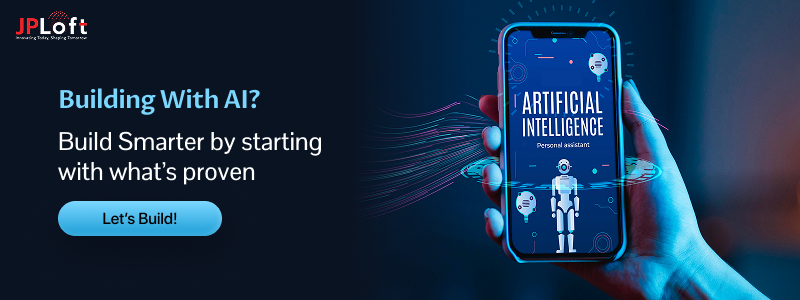
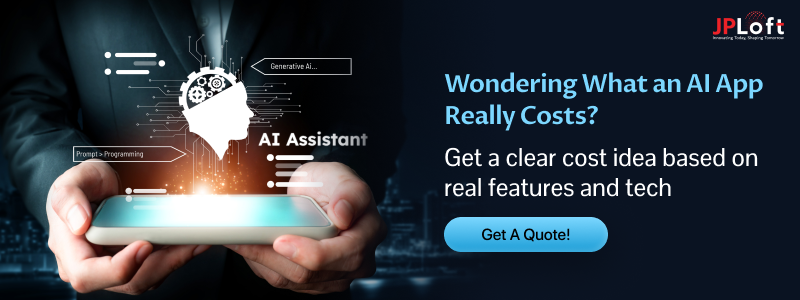

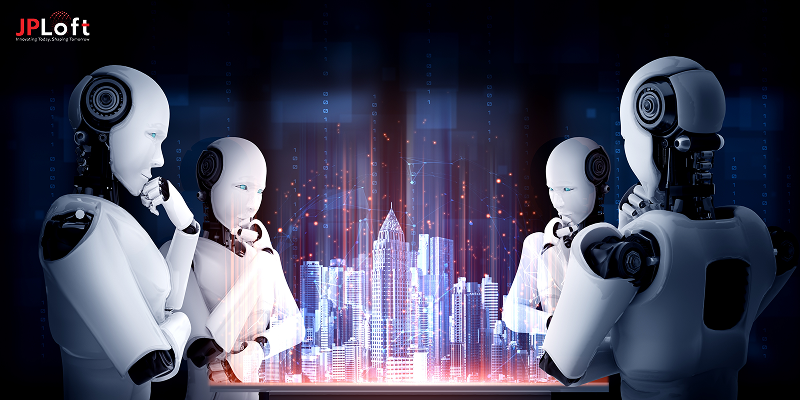
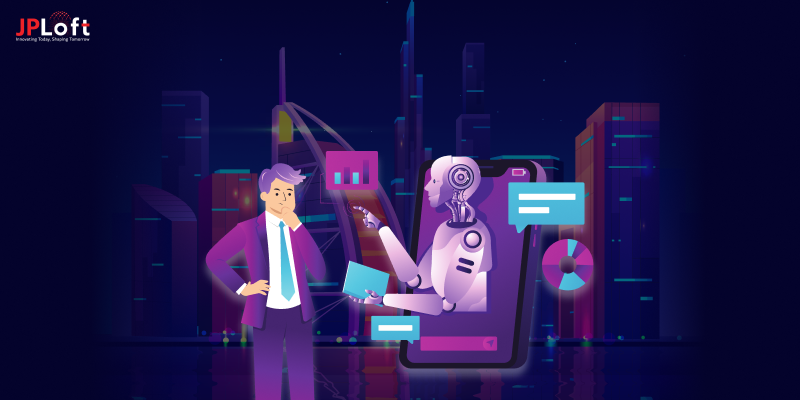
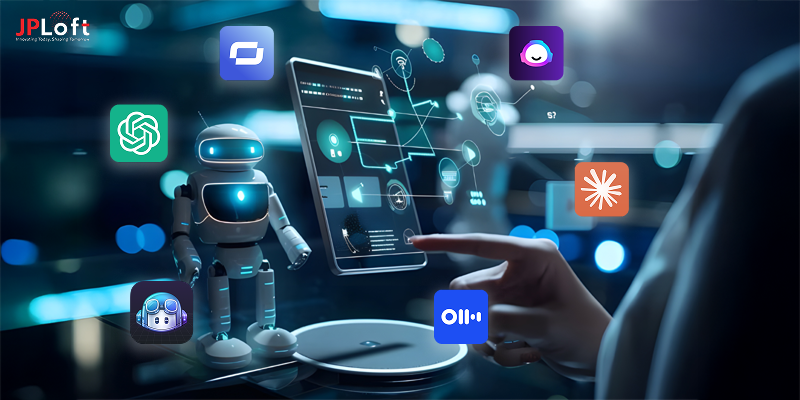


Share this blog